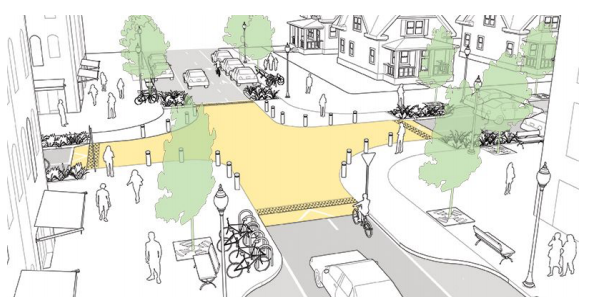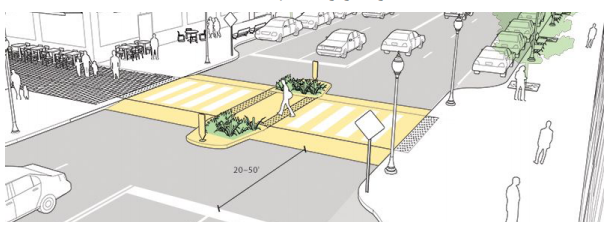A Reconstruction Project Becomes an Opportunity to Push for Safer Streets
In Duluth, Minnesota a $34 million reconstruction project is in the works for a downtown street. One Strong Towns member is using this as an opportunity to push for safer streets—or risk the newly paved street becoming more dangerous for everyone who travels down it, especially pedestrians.
Ben Garland moved to Duluth a year ago and soon began attending local transportation-related meetings when he learned about the plans for the reconstruction of Superior Street. "I looked at that design and said, this is a 1985 design," Ben recalls, "especially with regard to accessibility for people with disabilities and pedestrians in general." The street design prioritized fast car movement over safety and accessibility for everyone else.
Here's what Superior Street looks like now. Notice the many different modes of transportation (wheelchair, bus, skateboard, feet) in use in just this one image. (Source: Google Maps)
Ben began meeting with local advocacy organizations and the Duluth Commission on Disabilities to see what could be done. He notes that he wishes he had moved to Duluth a few years sooner; then he might have been able to intervene in favor of more dramatic changes to the street design at an earlier phase in the process. As it stands, he and his collaborators decided to be judicious in their proposed changes, while still advocating for a design that would be dramatically safer than the original concept drawings.
Together, they identified four key changes that could be made to the existing plans for Superior Street which would be reasonable and affordable. These included:
- Adding raised intersections to make crossings easier for pedestrians and more visible for drivers;
- Adding raised mid-block crossings (for the same reason as above);
- Angling curbs to make intersections safer and more navigable for people in wheelchairs, wheeling suitcases, pushing strollers, etc.;
- And, getting rid of left turn lanes to leave more room for sidewalks and narrow the streets.
In addition to working with local advocacy groups and neighbors, Ben also consulted planners and engineers outside the city for advice on his proposed design changes. He and his fellow advocates are now in the process of collecting signatures in support of the proposal which will be presented to the city in a few week. He has already collected more than 200 signatures from residents and also notes that every downtown business owner he's spoken with is in support of the proposal as well.
Issues of pedestrian safety and access for the disabled are particularly important in this community, although it may not be apparent to many residents and visitors. More than 15% of Duluth residents live below the poverty line, and many don't own cars.
Ben plans to continue advocating for the rights of pedestrians, especially those with disabilities, throughout Duluth. "The next big thing I want is to deal with wintertime issues—how difficult it is to walk around, let alone wheelchair to get around [in the winter]," he explains. He reports seeing wheelchair users forced to travel in the street when sidewalks aren't plowed properly and says that bus stop access is also frequently cut off when snow isn't fully removed.
Ben would also like to help different local government entities to work together on these issues. He highlighted the police department as an agency that could be a valuable part of the conversation on pedestrian safety because they are on the front lines of dealing with the impacts of car crashes. He also wants the disability commission to have a bigger voice in local decision making.
You can learn more about the efforts to build a safer Superior Street here.
To read more about Strong Towns members making a positive impact in their neighborhoods, visit our success stories page. And if you want to help create more success stories, join the movement.



